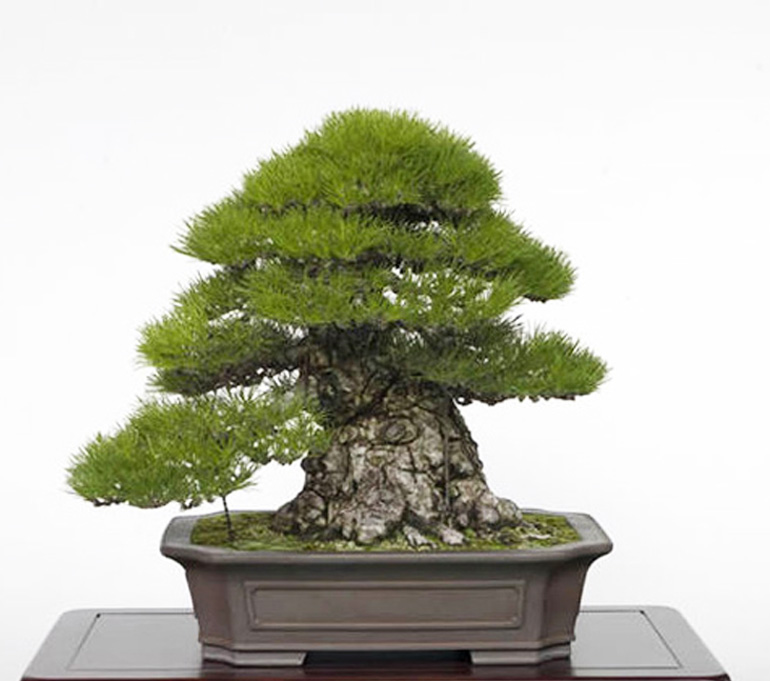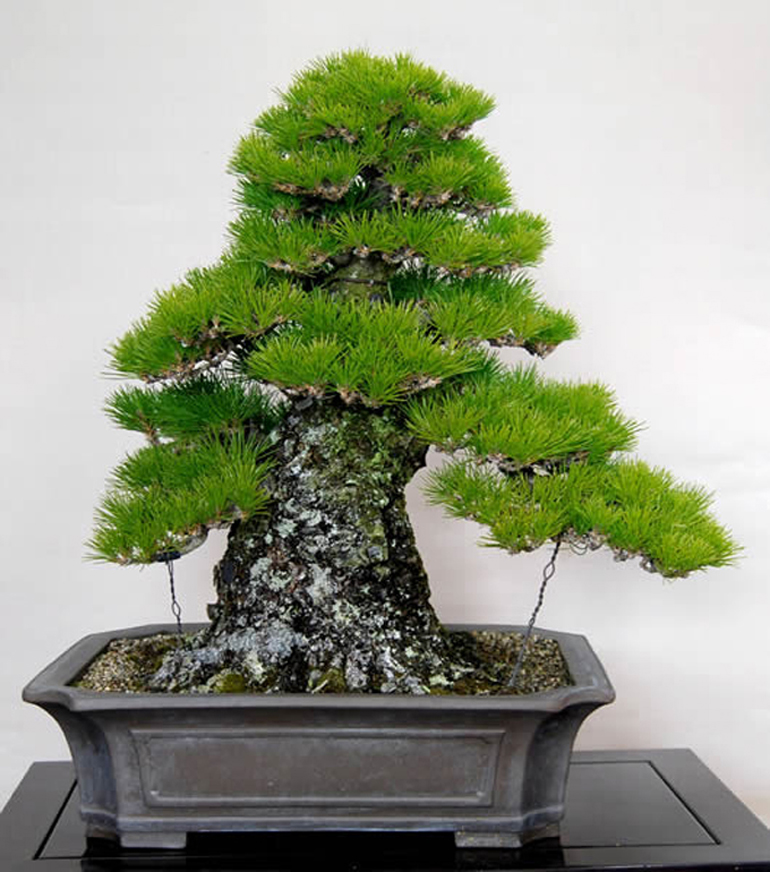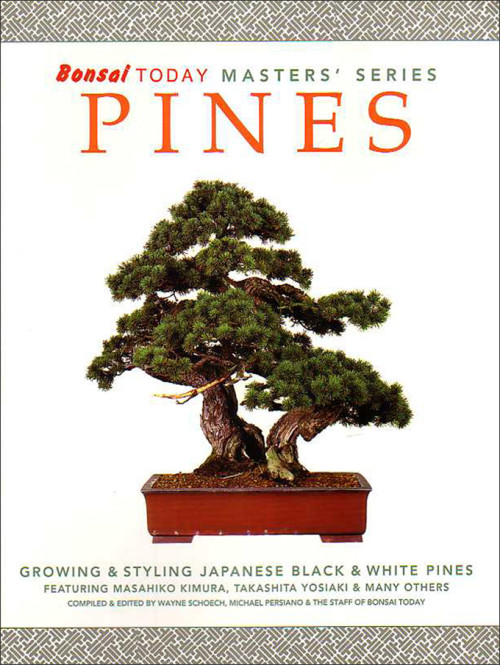
This powerful kuromatsu (Japanese black pine) won the Culture Minister’s Prize at the 20th Green Festa Kokubunji bonsai fair. It is 19″ (48cm) high and about 55 years old. It is owned by Toyoyuki Hamabata from Takamatsu’s Mure town in Shikoku. It appears at Bonsai World, an English language website from Shikoku Japan.
It’s the long Thanksgiving holiday here in the States so we’ll take the easy way out today and dig into our archives. The tree above is from a 2009 post titled Japanese Bonsai, Small is Powerful. The one below is from a January 2014 post titled Old Kuromatsu for a New Year.
Here’s what Bonsai World has to say about the tree at the top of the page: This kuromatsu (Japanese black pine) tree is relatively young. Its ”nebari” root spread is good and it stands up dynamically. Its trunk form clears the conditions for a good bonsai tree — the tree has a thick root and tapers off toward the top. The No. 1, No. 2 and No. 3 branches come out superbly. It is a promising kuromatsu tree.
It is well-potted, and attention has been paid even to minute details. The more the cultivator gives it care, the better it will be. As it is well qualified to be a bonsai tree, it should grow into a wonderful ”moyogi” tree with pronounced bends and curves.
Japanese sometimes have a propensity for understatement, so we’ll take that into consideration. But fifty five years is relatively young? It’s a promising tree? Makes you wonder why they gave it best in show or even honorable mention.
 Here’s another black pine from our archives. The branches are still developing but the trunk is undeniably powerful and so heavy that you could imagine it supporting a huge mass of foliage. There’s a lot more that could be said about this great old tree, but I’ll stop at pointing out the luminous color and texture of the trunk (not that you could miss it). The tree is around 50-years-old and was grown from seed. It belongs to Kiyoshi Hiramatsu (great name for someone who grows pines) owner of the Hiramatsu Seijuen bonsai garden in Takamatsu’s Kokubunji area in Japan.
Here’s another black pine from our archives. The branches are still developing but the trunk is undeniably powerful and so heavy that you could imagine it supporting a huge mass of foliage. There’s a lot more that could be said about this great old tree, but I’ll stop at pointing out the luminous color and texture of the trunk (not that you could miss it). The tree is around 50-years-old and was grown from seed. It belongs to Kiyoshi Hiramatsu (great name for someone who grows pines) owner of the Hiramatsu Seijuen bonsai garden in Takamatsu’s Kokubunji area in Japan.

On topic. The book for anyone who’s into pine bonsai.